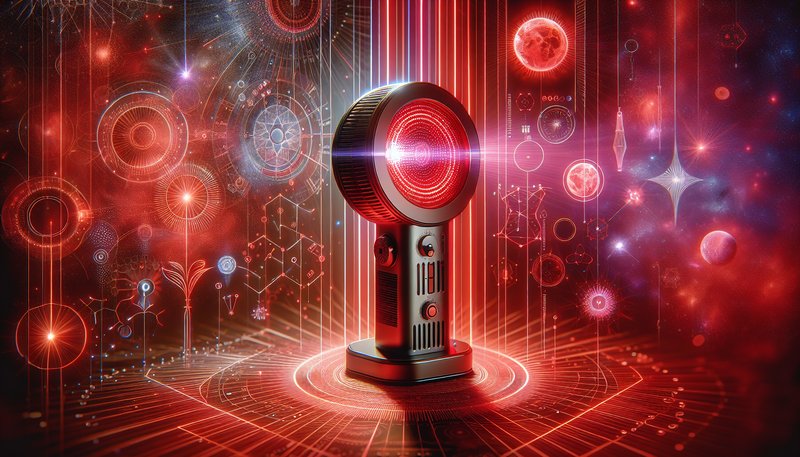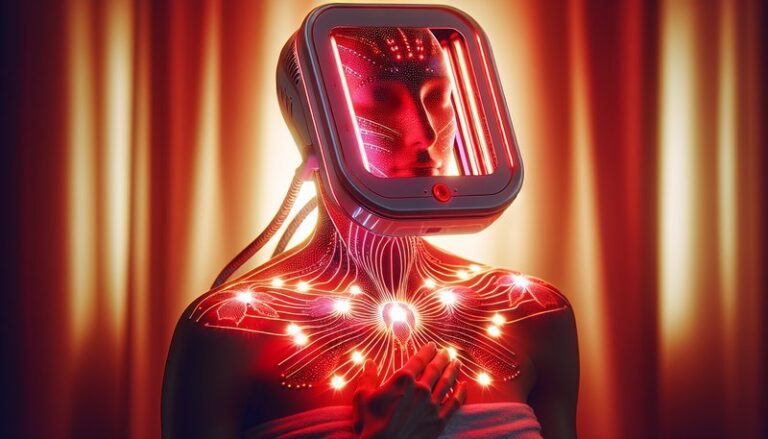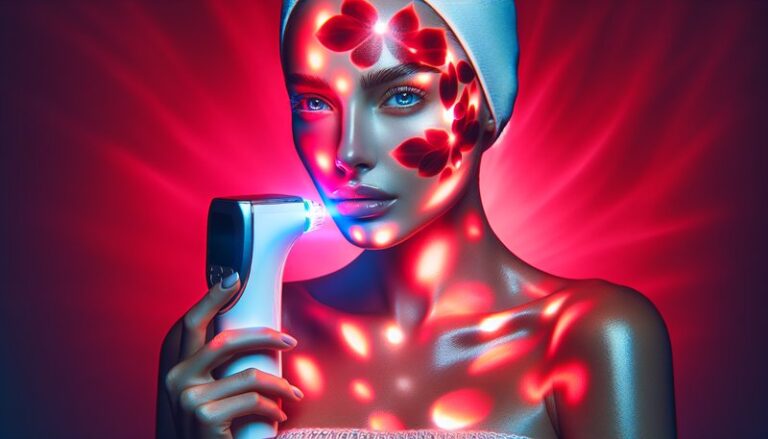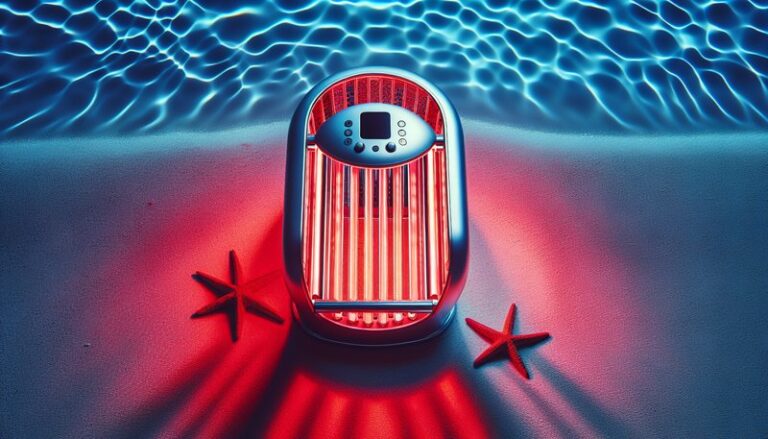What Is Red Light Therapy Used For?
Have you ever heard about the healing power of light?
Red light therapy (RLT) is a growing trend in physical and mental wellness, with numerous benefits that appeal to both health enthusiasts and professionals. In this article, we will explore what red light therapy is, its various benefits, key considerations, alternative treatments, and frequently asked questions, giving you a comprehensive understanding of this innovative therapy.
Key Takeaways
- Red light therapy uses low-level wavelengths of light to promote healing and improve skin health.
- It has proven benefits for pain relief, anti-aging, and improving athletic performance.
- Considerations, such as skin type and treatment duration, play a crucial role in the effectiveness of red light therapy.
What is Red Light Therapy?
Red light therapy is a non-invasive treatment that uses specific wavelengths of light, typically in the red and near-infrared spectrum, to stimulate cellular function and promote healing. This therapy works by penetrating the skin and being absorbed by the mitochondria, the powerhouse of the cells, leading to increased energy production and cellular repair.
The therapy can be administered through handheld devices, light panels, or professional lasers, and is often used in various settings, including dermatology clinics, fitness centers, and home health care.
Mechanism of Action
When directed onto the skin, red light therapy stimulates various biological processes. It enhances blood circulation, reduces inflammation, and accelerates tissue repair by increasing collagen production.
Additionally, research suggests that red light therapy can improve the body’s natural healing processes, making it effective for various health and beauty applications.
What are the Benefits of Red Light Therapy?
Red light therapy offers a wide range of benefits, making it a versatile tool for health enthusiasts and medical practitioners alike.
Pain Relief
One of the most prominent benefits of red light therapy is its ability to alleviate pain and inflammation. Studies have indicated its effectiveness in treating conditions such as arthritis, chronic pain, and muscle soreness by promoting circulation and accelerating the recovery process.
Skin Rejuvenation
RLT is popular in skincare for its anti-aging effects. The therapy can diminish wrinkles, improve skin texture, and reduce the appearance of scars by enhancing collagen synthesis and skin elasticity. Many people also use it to treat acne and other skin conditions, benefiting from its anti-inflammatory properties.
Improved Athletic Performance
Athletes are increasingly turning to red light therapy to gain a competitive edge. RLT can help improve recovery times, increase endurance, and enhance muscle performance by reducing oxidative stress and inflammation post-exercise.
Hair Growth Stimulation
Research suggests that red light therapy can also promote hair growth by increasing blood flow to the scalp, revitalizing hair follicles, and improving cellular metabolism. Many individuals suffering from hair thinning or loss use it as a non-invasive treatment option.
Is it Possible to Use Red Light Therapy at Home?
Yes, many devices are now available for home use. These range from handheld devices to full-body panels, making it convenient for anyone to incorporate RLT into their wellness routine.
What are the Advantages of Home Use?
Using red light therapy at home provides several advantages, including:
- Convenience: You can easily fit sessions into your daily schedule without needing a trip to a clinic.
- Cost Savings: Over time, investing in a home device can save you money compared to regular professional treatments.
- Accessibility: With a home device, RLT is available whenever you need it, allowing for flexibility in treatment timing.
What are the Disadvantages of Home Use?
While using RLT at home is feasible, some disadvantages include:
- Effectiveness: Home devices may not deliver the same intensity or quality of light as professional-grade equipment.
- Self-Monitoring: Without professional guidance, it can be challenging to determine appropriate treatment times or wavelengths for specific conditions.
- Initial Costs: High-quality home devices can be expensive upfront, even if they save money over time.
What are the Things to Consider Before Using Red Light Therapy?
Before starting red light therapy, several considerations should be taken into account for effective and safe use.
Skin Type and Sensitivity
Different skin types may react differently to RLT. People with sensitive skin or certain skin conditions should consult with a dermatologist before starting treatments.
Treatment Duration and Frequency
Finding the right balance of duration and frequency of therapy sessions is crucial to achieving the desired results. Following manufacturer guidelines or professional advice can help maximize the benefits.
Pre-existing Conditions
Individuals with specific health issues (like photosensitivity or certain eye conditions) should seek medical advice before using RLT, as it may pose risks.
What are the Alternatives to Red Light Therapy?
If red light therapy isn’t suitable for you, there are alternative treatments worth considering.
Infrared Therapy
Infrared therapy involves using infrared light, which penetrates deeper into the body tissues. It’s often used for pain relief and muscle recovery, similar to RLT.
Cold Laser Therapy
Cold laser therapy, or low-level laser therapy (LLLT), utilizes low-intensity lasers to stimulate healing and reduce pain. This method shares similarities with red light therapy and is effective for various medical conditions.
Microdermabrasion
For skincare purposes, microdermabrasion is an exfoliation procedure that can improve skin texture and reduce signs of aging. While not light-based, it offers notable skin rejuvenation benefits.
Conclusion: Is it Recommended to Use Red Light Therapy?
Red light therapy presents a variety of potential benefits, from pain relief and skin rejuvenation to enhanced athletic performance. While at-home devices offer convenience and accessibility, it’s essential to understand your individual needs, background, and skin type. Consulting with healthcare professionals can help ensure that red light therapy is a safe and effective option for you.
Explore further in Is Red Light Therapy Safe for Thyroid?
Frequently Asked Questions
What is the ideal treatment duration for red light therapy?
Typically, sessions last between 10 to 20 minutes, depending on the specific device and treatment area. It’s essential to follow the manufacturer’s guidelines for best results.
Can red light therapy be used in conjunction with other treatments?
Yes, RLT can often complement other therapies, such as physical therapy or skincare procedures. However, consulting a healthcare provider is recommended to ensure compatibility.
Is red light therapy safe for everyone?
While RLT is generally considered safe, individuals with specific medical conditions or those who are pregnant should consult with a healthcare professional before starting treatment.
Are there any side effects associated with red light therapy?
Red light therapy is typically well-tolerated, but some users may experience mild skin irritation or temporary redness. If persistent or severe side effects occur, it’s advisable to discontinue use and consult a medical professional.
Discover the facts in Does Home Red Light Therapy Work?
How long does it take to see results from red light therapy?
Results can vary widely depending on the individual and condition being treated. Some may notice improvements within a few sessions, while others may need several weeks for significant changes.





